Unnatural Links
What are Unnatural Links?
Unnatural links are spammy backlinks that don’t follow Google’s guidelines and have been attained for one of the following purposes:
- In an effort to manipulate and improve your website rankings
- As part of a “negative SEO” attack
Unnatural links are also commonly referred to as link schemes.
Are Unnatural Links Bad for SEO?
Many of the types of links considered to be unnatural today were widely used by site owners and viewed as legitimate link building techniques.
Google has since released numerous algorithm updates to reduce the impact these links have on a website’s rankings, completely de-valuing them.
This means that they don’t count toward any website’s organic rankings.
So, technically, they are not bad for SEO. But that doesn’t mean they’re good – spending the time and effort acquiring any of the following types of links is a waste.
This means that “negative SEO” attacks are no longer possible either.
However, when done excessively and on purpose, unnatural links (especially reciprocal and paid links) will attract the attention of Google’s staff to your website and may cause a manual review.
Depending on the results of this review, your website may even get penalized by Google, reducing its rankings in search results or removing it from them completely.
Unnatural Link Examples
Now, let’s look at some examples of unnatural backlinks.
Reciprocal Links
Reciprocal links are mutual backlinks that have been obtained as part of a link exchange.
The following is an example of a low-quality, mass-sent link exchange email pitch that we received.
The person didn’t even bother BCC-ing all recipients, so we could see the long string of other recipients.

Paid Links
Paid links are backlinks that have been added to a website for monetary gain, free products, or any type of exchange, really.
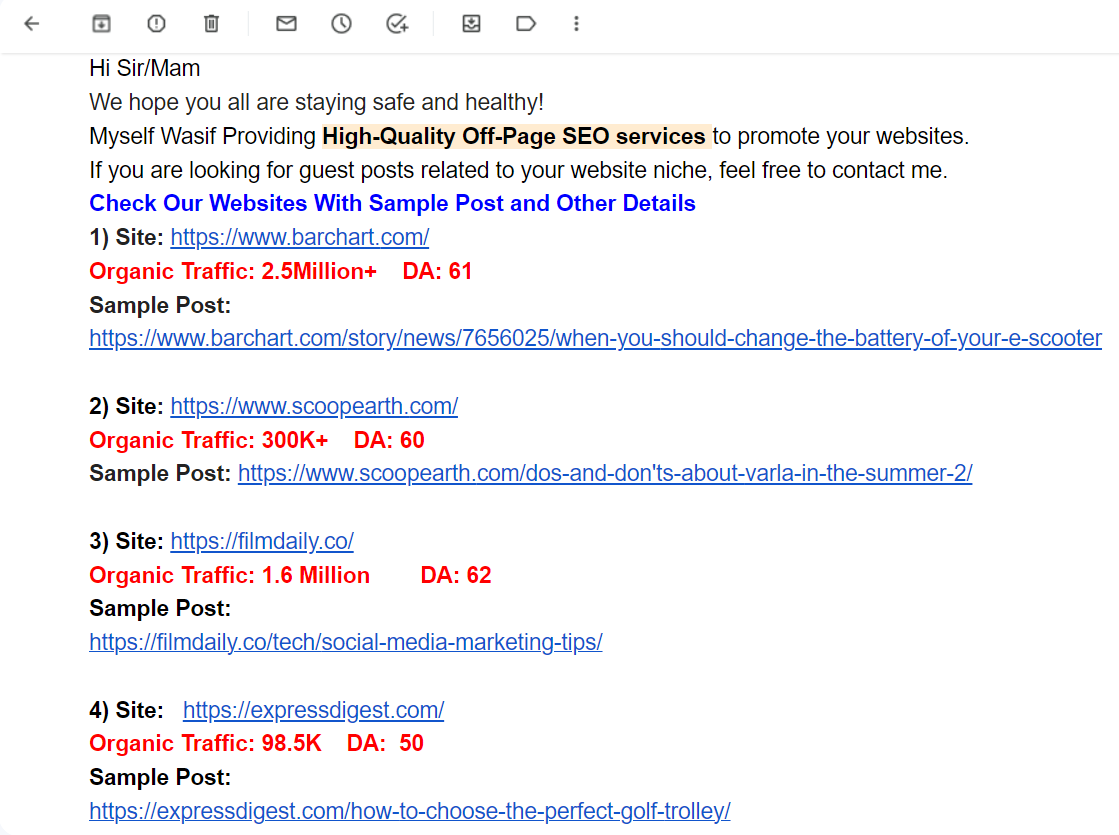
These are strictly against Google’s guidelines but should not be confused with sponsored links.
Sponsored links are technically also paid links and are acquired through purchasing sponsored content, product reviews, or any other kind of paid collaborations.
They are Google-compliant as long as they are clearly marked as sponsored (with the rel=sponsored tag).
Guest Post Links with Excessive, Keyword-Rich Anchors
Guest posting on its own is a legitimate, white-hat link building practice.
However, the links in your guest posts can quickly turn unnatural if there is a lot of them in the content, and all of them include exact-match keywords in their anchors.
To avoid unnatural guest post links, make sure there is a reasonable amount of them in your content, and the anchors used mostly have partial-match keywords in them.
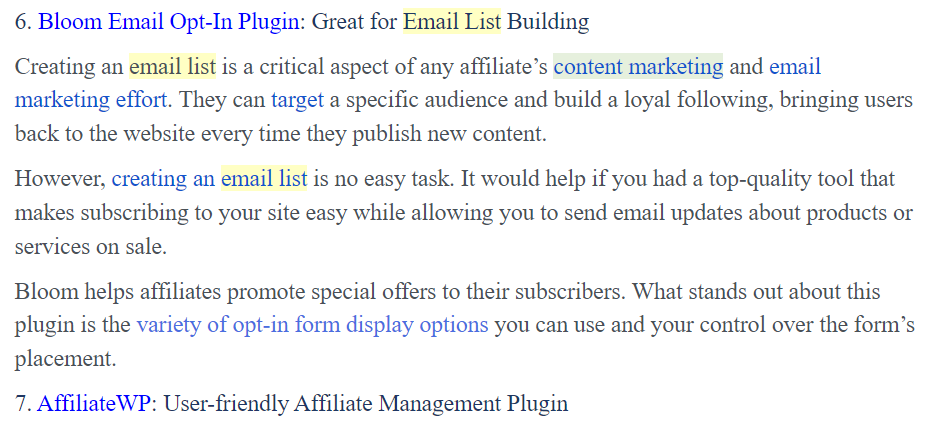
Automatic (Bot) Links
Any kind of automatically-built links are against the guidelines.
Allow us to clarify: you can use a link building outreach software to automate the most tedious aspects of white-hat link building outreach, but you can’t, for example, have a bot going on forums, other blog posts and social media posts and automatically leaving comments with your links there.
PBNs
PBN stands for private blog networks.
These are groups of websites owned by the same organization and created solely for the purpose of linking to other websites, often for a profit.
PBN links used to be very popular before the Google link spam updates and have since been outlawed.
Bookmark/Directory/Free Publishing Sites
Much like PBNs, bookmarking and directory websites used to be popular link building targets among website owners.

On the surface, these types of websites have a high authority rating and generate a substantial amount of organic traffic each month.
These sites also often allow any user to publish their own content, making them popular guest posting destinations.
However, since these resources link out to thousands of websites in vastly different niches, their outbound link profile is considered to be unnatural, and so these links don’t hold any actual SEO value.
Misleading Redirects
On their own, redirects are a legitimate SEO practice to preserve referral traffic to pages that have been moved, and generally, keep the user experience high.
Unfortunately, redirects are sometimes taken advantage of in shady purposes, so if the target page is different to what the user would expect to see (based on the link anchor text), it can be considered an unnatural link.
Excessive Blog/Forum/Social Media Comment Links
Blog and forum comments is one of the most primitive link building methods.
It is also one of the most spammy.
Don’t do it.
Sudden Spikes in Link Number
A sudden increase in the number of inbound links serves as a strong indication to Google that something’s going on.
This “something” could be an attempt to get a bunch of links quickly, or, once again, a negative SEO attack.
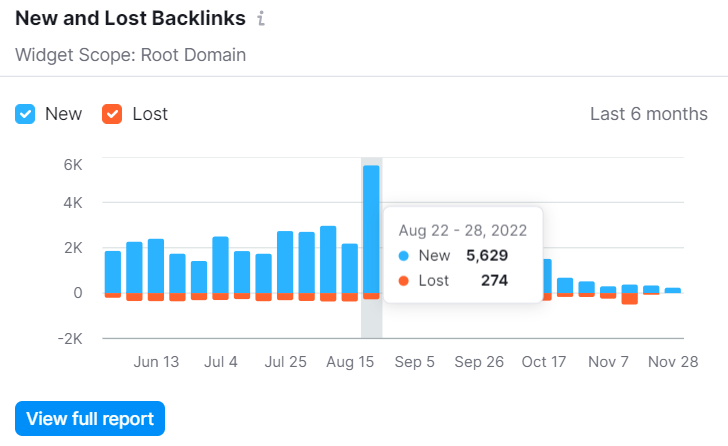
How to Detect Unnatural Links and What To Do About Them?
Luckily, you don’t have to do much to keep yourself safe from unnatural links since Google automatically identifies and de-values them from the ranking algorithm.
But if you want to be absolutely sure, you can use a backlink monitoring tool like Ahrefs to identify and disavow them.
Look For Low-DR/DA Websites
Domain Rating/Authority is a pretty good identifier for low-quality links as most of them come from websites with a score of 0 or slightly higher.
If you use Ahrefs, you can simpy go to your backlinks report and set the DR filter to 0-15.
As you can see on the screenshot below, this will leave you with a whole bunch of unnatural links from weird sites.
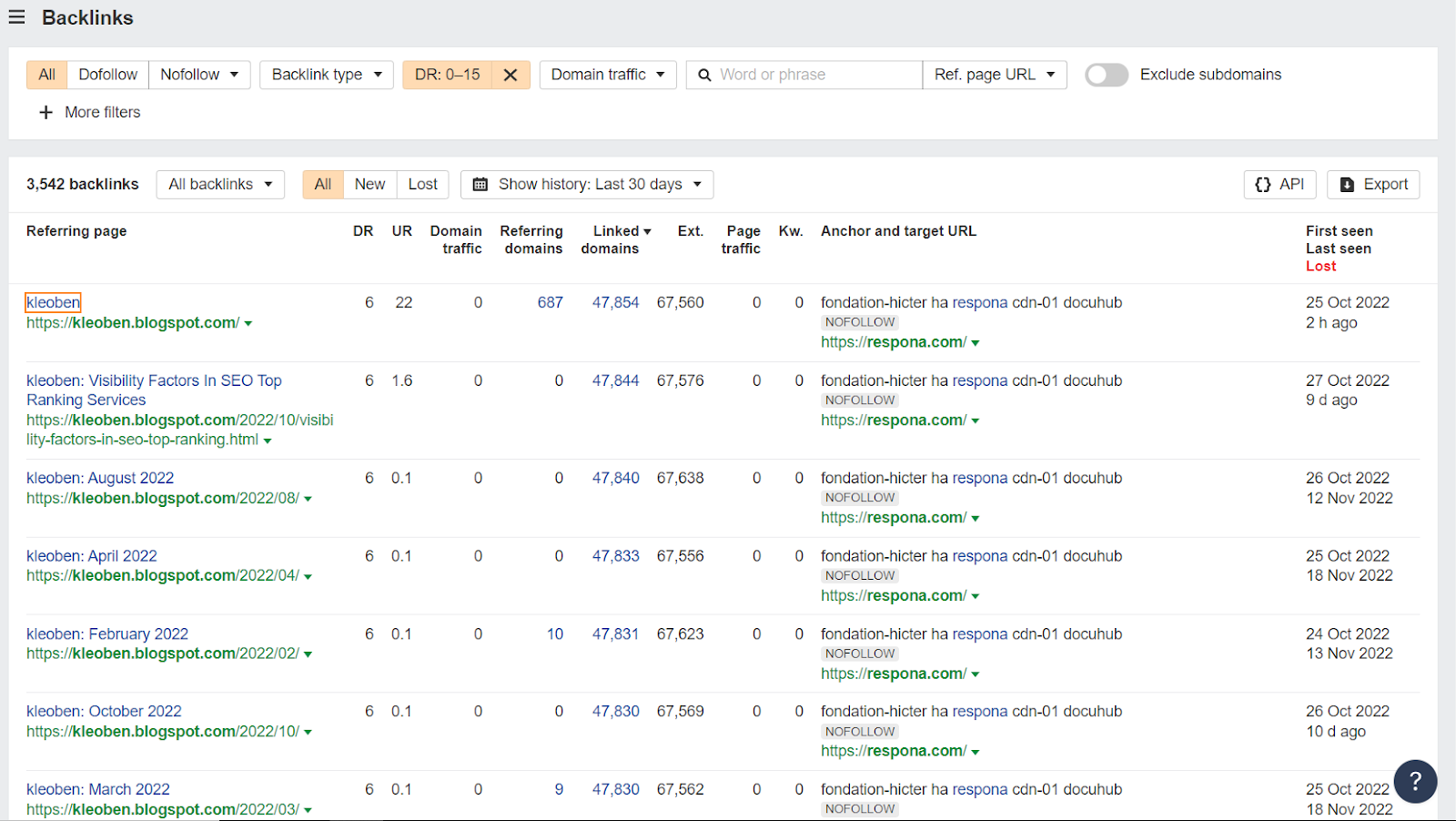
Check The Total Number of Links From A Referring Domain
In Ahrefs, you can filter your Referring Domains report by the number of links to your site.
Once you do so, domains with the most links to you will appear right at the top.
A “normal” website won’t typically link to another one more than a few times.
So if you spot any domains like on our screenshot (with thousands of links coming from them), you know something is up.
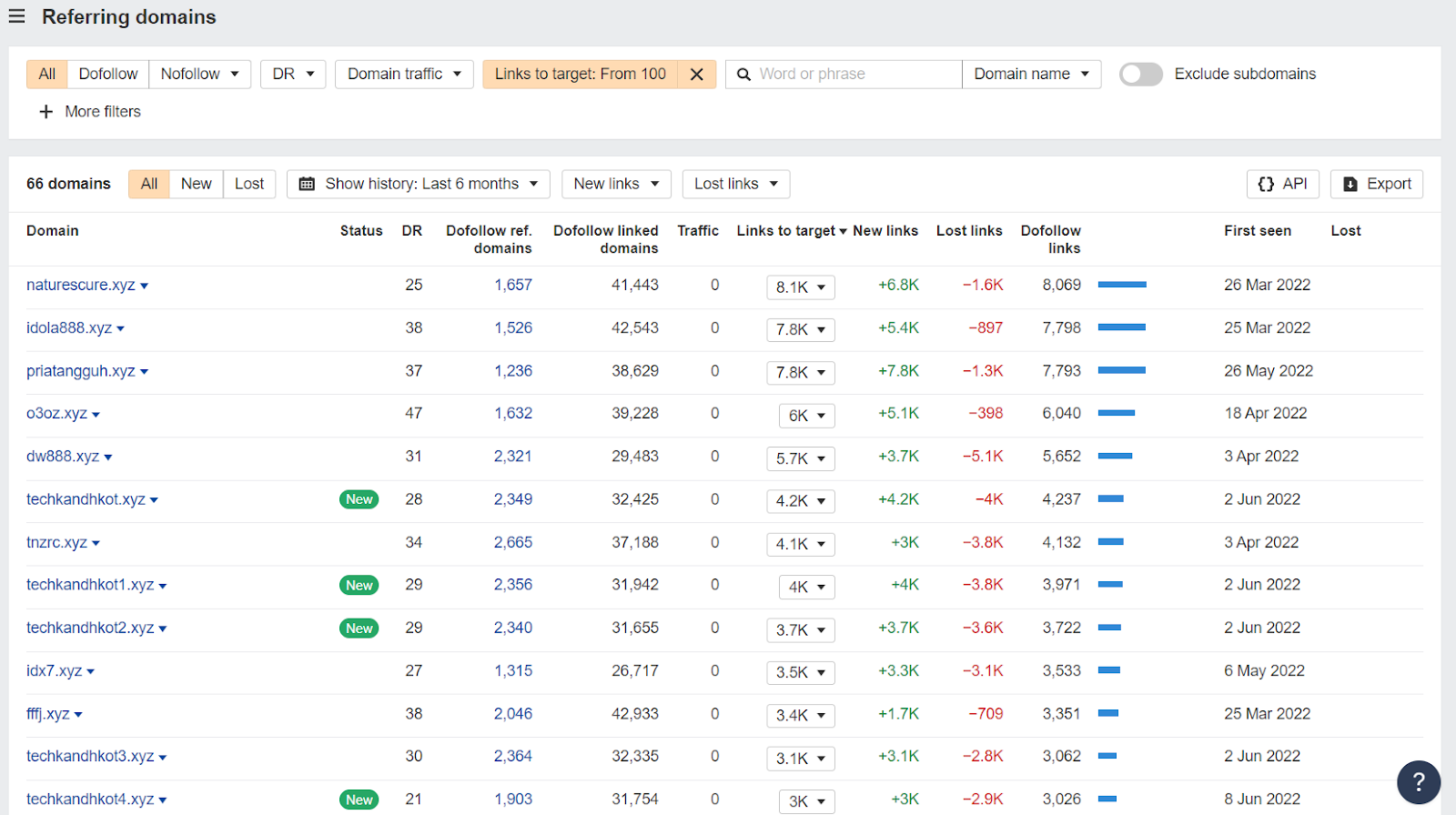
Check Anchor Texts
Ahrefs also provides an overview of all backlinks that have a specific anchor text.
Hundreds of links with an empty anchor, exact match of your title, or some other irrelevant keyword are also considered unnatural.

Disavow
Once you have the list of your unnatural links (or if you know you have paid for links in the past or took part in some link schemes), to stay on Google’s good side, you can disavow them.
A disavow is a request for Google to ignore certain links in the algorithm so that they don’t count towards or against you.
There are two steps to this process:
- Create a disavow file
- Upload it to Google’s disavow tool
As for the file, it must be encoded in UTF-8 or 7-bit ASCII, its extension has to end in .txt, and it can’t be longer than 100,000 rows.
You can disavow individual links or whole domains.
Here is an example of a disavow file provided by Google:

Once you have your file, you can go ahead and upload it to Google’s Disavow Tool.
Bottom Line
Avoiding unnatural links is pretty easy.
All you have to do is not buy links, use bots to farm comments for you, or participate in reciprocal exchanges.
Even if you do none of these things, there will still be some weird and unnatural links building up (and mysteriously disappearing after a while) – that’s just how the Internet is.
You don’t have to worry much about those – as Google already excludes them from the ranking algorithm automatically.
To learn more about how you can generate more “natural” links, feel free to refer to our link building outreach guide.

